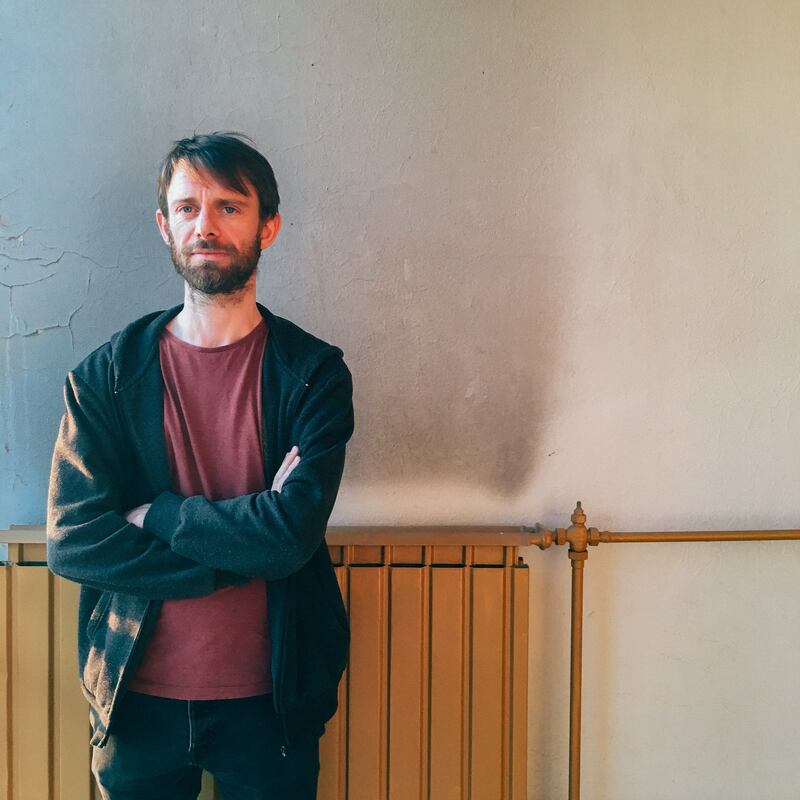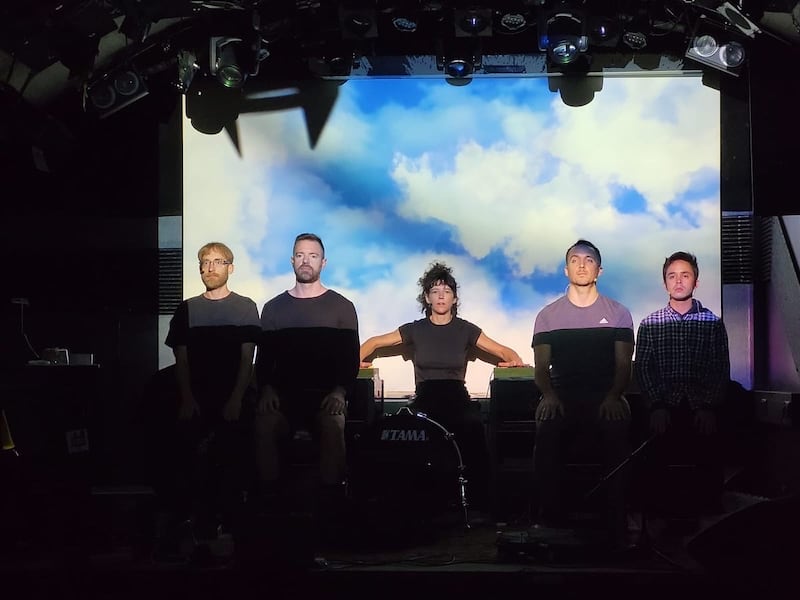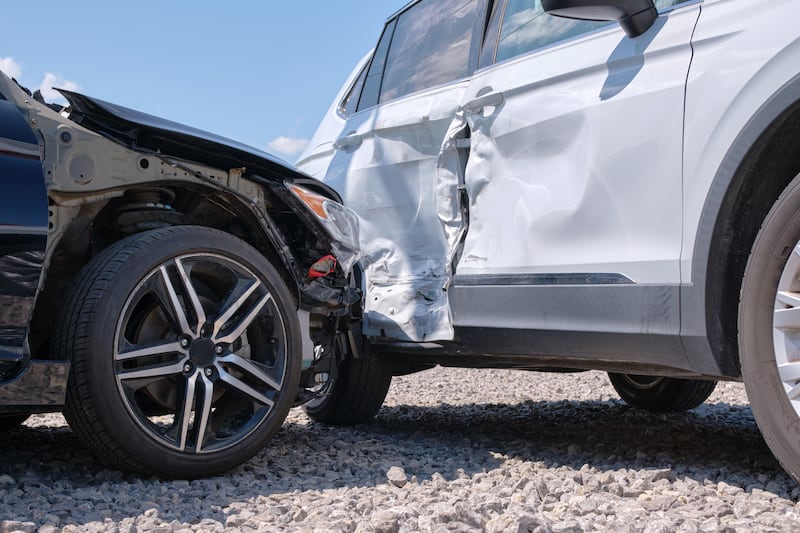The five-day Music Current festival is a platform for the kind of experimental music that tends to fall through the cracks in Ireland’s musical life. Its artistic director, Fergal Dowling, is himself a composer, a founder of Dublin Sound Lab, “a contemporary music project group specialising in electronic and computer-mediated concert performance”, who also appears with his laptop as a performer at the festival.
He programmes “the kind of concert experiences I would like to experience myself”, and part of the reason for his getting involved as a performer of other people’s work is to “see how these pieces are constructed from the inside, to get someone else’s piece and figure out how they did the electronic parts”.

When we speak, Dowling talks more than once about the way his activities inform one another. “It’s maybe a role like a meta-composer or something? I might change ‘artistic director’ to ‘meta-composer’. Someone asked me the other day what was I, what do I play? I normally give some silly answer. But I gave an even sillier one, and I said, ‘I improvise at music curation.’ God, I shouldn’t say that. It sounds terribly quotable, doesn’t it?”
He parries a question about what he’s most looking forward to this year, replying that he’s looking forward to everything. Then he adds, “I think the Nadar Ensemble programme” – on Saturday, April 15th, at 8pm – “is very special. They’re a really crack squad. They’re bringing a whole team over to do the show, with all their own equipment. There’s some very funny, tongue-in-cheek pieces, like the mirror scene from the Marx brothers’ Duck Soup, which probably everybody knows. But to see it in a concert setting is going to be a very different experience that will inform the other works, of course, and inform your sense of what a concert is.
10 of the best new shows to watch in April: including Netflix medical drama and two AppleTV+ releases
MobLand review: Pierce Brosnan’s Irish accent is a horror for the ages. Forget licence to kill, this is more Darby O’Gill
Steve Wall: ‘When Bono was offered the medal, I tweeted: Surely he won’t accept that. I didn’t know he already had’
“Then I’m especially looking forward to Stefan Prins’s Generation Kill, which is probably one of the biggest and most technically challenging works we’ve staged ... since the last time we did a Stefan Prins piece. It’s also perhaps the most politically engaged and direct and most shocking piece we’ve programmed.”
I speak also to three of this year’s other participants, all anything but simple in the range of their work, and ask what they identify as.

The Japanese musician Izumi Kimura, who has lived and worked in Ireland since 1995, replies, “What am I? I ask myself maybe once or twice a week. And it’s always different. I can only play the piano. That’s all I can do, really. The rest is that I’m just trying to survive. I like improvising, because it’s the most natural way for me to be a musician. I just try to find a way to develop myself as an improviser, a musician, as well as trying to find my place in the world, in this society. I learned almost nothing by being a student,” she says. Improvisation came to the fore when she got involved with Ireland’s jazz community.
Her Music Current performances are all world premieres. Calanchi, by the Berlin-based Italian composer Alessandro Massobrio, is for piano and electric guitar. Kimura will be performing it with Shane Latimer. Massobrio “uses a lot of electronics and technology. I’m just playing piano – but mostly inside the piano, the strings. She shows me a selection of mallets she will be using. “That was the interaction I was given by Alessandro, and we worked together to create the piece. It’s completely notated. I don’t improvise.”
Francis Heery’s piece, Towards a Soteriological Theory of Bog Bodies, is, she says, “much more improvisational. His score has of lots of illustrations, texts, words and poems and concepts. He has very vivid imagery, things to inspire music. He’s playing as well, electronics. That’s for myself and Shane, again. It’s improvising within a structure.”
These installations would be more sound art, because they’re sculptural. They’re long-form, somewhat improvised habitats or sculptures
— Francis Heery
Re_sett_ing_s, by the visual artist Jaki Irvine, is “a video piece that a group of musicians improvise to – improvisation between musicians, inspired by what’s on the screen. Jaki is very, very open, very trusting of the musicians she has chosen. She doesn’t give us any instructions.”
Kimura says she emptied her week for the festival and is looking forward to the strand of workshops, Natacha Diels’s solo set and Michael Maierhof’s opera, Cold Sweat. “Until my concert is over, on April 12th, I probably have to concentrate on that. But I’d like to see as much as possible.”

Heery describes himself as composer, improviser and sound artist. “I have three main practices,” he explains. “Mostly these days it’s improvising and performing. I live in Berlin, where there are a lot of opportunities to perform. A second thing I do quite a lot [is] site-specific, performed installations in various locations. For Culture Night I did a four- or five-hour performed installation in the aquarium [in Galway], for example. These installations would be more sound art, because they’re sculptural. They’re long-form, somewhat improvised habitats or sculptures that sit in a space, somewhere between a sculpture and a performance.”
He has found himself gravitating away from conventional notation, as composition and improvisation “have begun to meld in my head a little bit”. Towards a Soteriological Theory of Bog Bodies, his new piece, “entails a lot of, shall we say, the creation of certain cues and strategies to express a particular idea I have in my head. It’s relatively unconventional, even for me. If the question is what is composing and what’s a score, it’s creating a certain specific musical phenomenon, and the way you do that is increasingly open as time goes by. It’s not necessarily anchored to a paper score, to a set of instructions, like writing.”
He sees the standard idea of a score as being linked to the content of language. “Conventional notation, for me, began to be increasingly restrictive, because I was interested in timbre, sound as a kind of material that you can explore and engage with on its own terms, so to speak. The conventional notation, even if it’s involving unconventional lines and squiggles and graphic elements, is still very much linguistic in some way.”
Probably about 10 years ago I started involving choreographed gesture as a counterpoint to the musical material. I always use electronics in my pieces
— Natacha Diels
In his notes for the new piece, he says, he wrote that it “should sound like it was written by a tree, or by some kind of micro-organism”. He wasn’t exactly sure what that meant. “It was just an attempt to break away from that quite linear format of a score.” He created instead “a very specific conceptual frame, within which the performers, who I know are very good improvisers, would respond in quite a particular way. I’ve got a very particular idea in mind with this piece, and it’s to do with the east Galway bogs.”
He’s looking forward “to hearing/experiencing Michael Maierhof’s Cold Sweat. I’m intrigued by the mix of pop-culture references, the theme of mortality and domestic setting. Similarly, I’m looking forward to both Jaki Irvine’s new work at the Re_sett_ing_s concert and Natacha Diels’s multimedia compositions.”

Diels says simply that “I’m a musician, and that manifests in a lot of different ways”. Her website says that her work “combines choreographed movement, improvisation, video, instrumental practice, and cynical play to create worlds of curiosity and unease”. She elaborates. “When I write compositions I often involve those things. Probably about 10 years ago I started involving choreographed gesture as a counterpoint to the musical material. I always use electronics in my pieces. I don’t think I’ve ever written an acoustic piece of music. I write for instruments and electronics, and I’m always trying to walk the line between something really tragic and something funny, which I kind of think of as cynical play.”
She also uses “a lot of non-classical instruments in my writing. I like to use objects or bodies, in the sense of choreographed gestures. I use untrained voices a lot, like musicians’ voices. And I use a lot of video and theatrical elements. Lighting is a really important part of a lot of my pieces. Because I’m really thinking of them all as these sort of abstract stories. It’s not super-important to me that the audience knows what that story is, but the sense is that there’s this narrative that’s kind of pulling you through the pieces.” She doesn’t always divulge the stories, not even to performers.
What she calls the “overarching narrative for this set” are “little stories that are partly written by an AI and partly written by me”. One of the works uses a kind of cranked spirograph whose drawings she has turned into a Midi controller. Another uses text generated by InspiroBot, an “inspirational-quote generator” that can also create stories. The piece that uses it, she says, is “kind of like the meditation of tedium. It’s very long and boring, but also pretty, I guess.” The second part has quotes from Led Zeppelin, Martha Wainwright and Tom Waits that take the story into a darker place.
At Music Current, she says, she is really looking forward to Michael Maierhof’s opera. “I’m staying an extra day so that I can see that.”
Music Current runs at Project Arts Centre, Dublin 2, and the Contemporary Music Centre, Dublin 8, from Wednesday, April 12th, to Saturday, April 15th


















